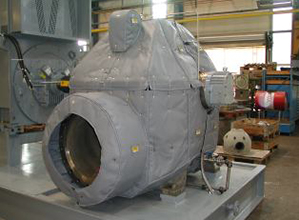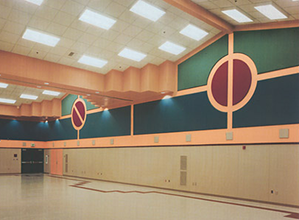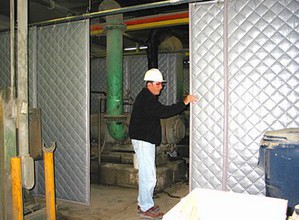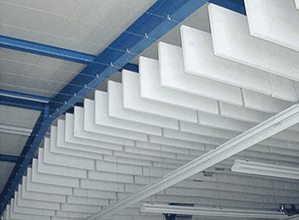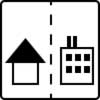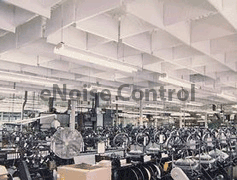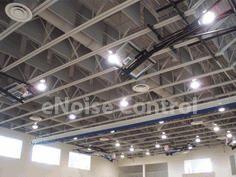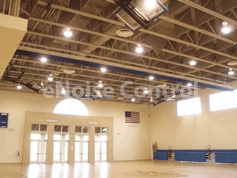Sound Baffles
Sound baffles are a low cost and non-intrusive solution to many common noise control problems. These ceiling or overhead baffles absorb reflected noise (sometimes called reverberated sound) bouncing off hard flat walls, floors, or ceilings. This often manifests as an echo and can make it difficult to hear conversations in these types of spaces. Acoustical baffles are an absorptive board or sound barricade that can be placed around or between acoustic sources to provide sound isolation or deadening and reduce acoustic leakage. A fundamental tool of noise mitigation is the use of sound baffles. By definition, a sound baffle is any object designed to reduce airborne sound. They are an effective noise barrier when applied to walls and ceilings in building interiors to absorb sound energy and thus lessen reverberation.
Most baffle products are easy to install and come in many sizes and styles. The traditional sound baffle is wrapped in a PVC facing, but other options include Poly, Sailcloth, sound curtain, and foam. Additionally, we offer sound baffles for food processing applications that are required to meet specific FDA requirements. Baffles can be selected to blend in with the walls or ceilings or they can be manufactured in a variety of colors to complement the decor. Learn about some of the different options available for sound baffles. Acoustic Banners are another similar product often used in these types of applications.
Common Applications
Sound baffles are ideal for reducing reverberation times anywhere you encounter airborne sound transmission. This is common in large open spaces with many hard surfaces.
- Gyms and Athletic Facilities
- Pools
- Cafeterias
- Clubhouses
- Churches
- Schools
- Multi-purpose Rooms
- Metal Buildings
Acoustical Ceiling Baffles Best Practices
Many buildings or rooms are designed or constructed with little focus on room acoustics. Most commercial rooms are designed to use common and inexpensive building materials that are easily painted, installed and cleaned. These materials such as painted concrete block, drywall, metal roof decking over bar joists, poured concrete floors are very reflective to sound.
When sound is generated in a space, the sound will hit these surfaces and bounce back creating additional sound. This is typically referred to as an echo. This room condition can cause many problems depending on the rooms use. Garbled speech, speech intelligibility, unable to understand warnings announcements and poor acoustics are just a few of the issues that may arise.
The solution to this problem is adding sound absorption to the space. Sound absorbers are soft, porous, open-celled materials such as foam sheets, fiberglass panels or baffles that reduce the reflection of sound waves off of hard surfaces. Their sound absorption efficiency is rated by a “NRC” number, or Noise Reduction Coefficient. The HIGHER the NRC rating, the more EFFICIENT the product is at absorbing noise. We can calculate the correct amount of sound absorption to add to a room using the room dimensions and the materials the room surfaces are constructed.
Example: Painted Concrete Block Walls, Hardwood Floor, Metal Deck Ceiling. There is a data base of most building materials NRC values. We can take the surface area covered with each building material and its respective NRC rating for the individual sound wave “octave bands” to determine the total amount of acoustical absorption that is present in the room.
Next, we can add acoustical absorption to the room in our calculation. This will tell us the optimum square footage of sound absorptive material at a specific NRC value to add to the space per the room’s intended use. For example, a classroom or conference room would require a higher density of sound absorption per room size than a gymnasium or a cafeteria. Once we determine the amount of absorption to add, we can introduce the different sound absorption products, each with different architectural looks and price points. Historically acoustical baffles are typically the lowest cost sound absorption material available.
Sound Baffle Installation
The most common method of installation is to suspend sound baffles from the ceiling. The baffles can be manufactured with grommets for easy suspension. Another popular method of installation is the attach the baffles to the wall. This is especially common with baffles made of sound curtain material.
eNoise Control can help you determine the right sound baffle product for your individual application. Based on the needs of your space, we will calculate the appropriate quantity of material to achieve your desired noise reduction goals.
